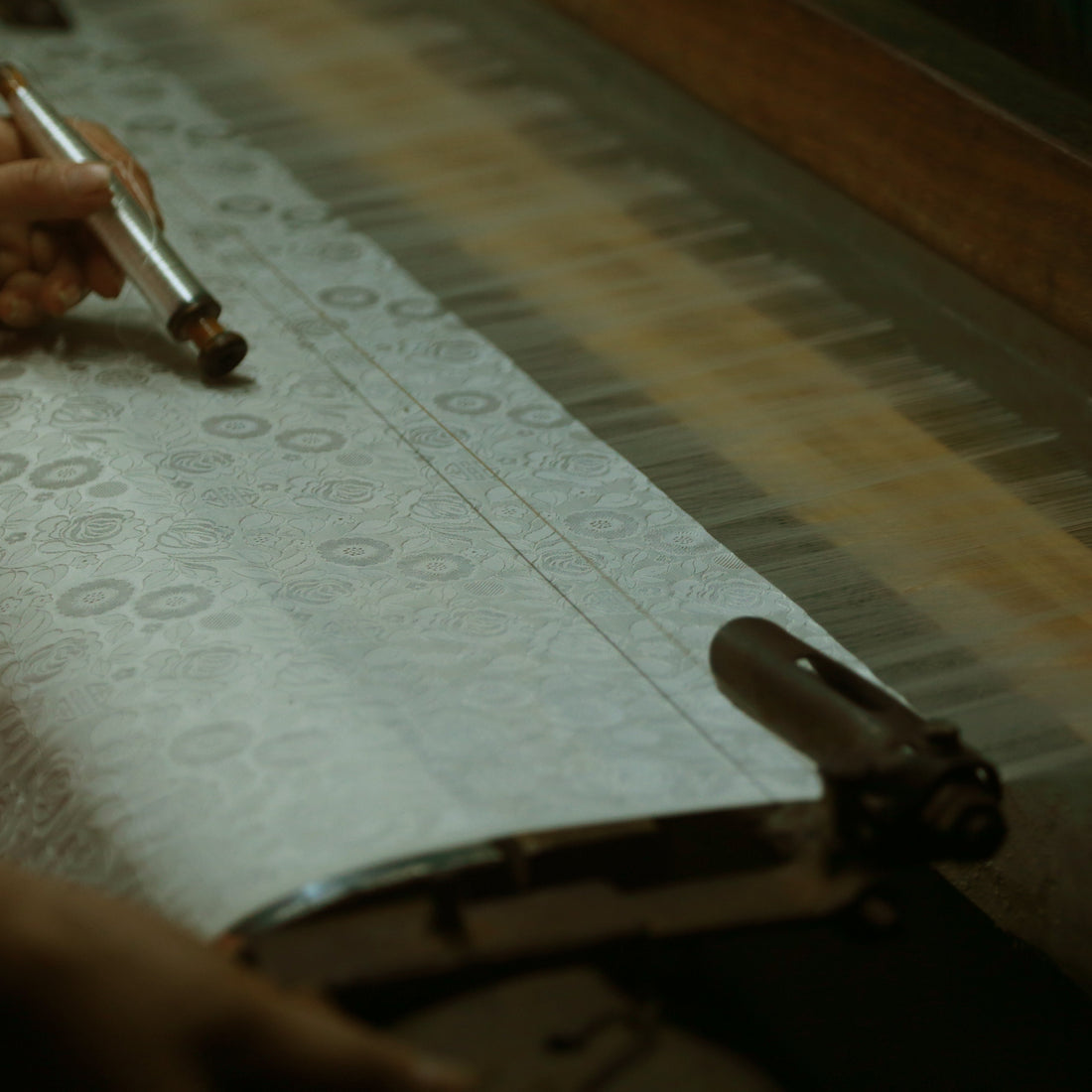Vietnamese Silk Exporting Situation Through History

Share
A journey of Craft, Decline, and Global Recognition
Vietnamese silk has long carried with it the elegance of tradition and the precision of handcraft. Woven not only from threads but from generations of artisanal knowledge, Vietnamese silk production has shaped both cultural identity and international intrigue. Yet today, while it continues to garner appreciation abroad, the industry faces a paradox: global demand is rising, but domestic production is fading.
The craft at risk: The Vietnamese silk production
Vietnamese silk production remains deeply rooted in handcraft. Unlike countries like China or India, where silk factories enable mass production, Vietnam’s silk is still largely made by hand in artisanal villages such as Van Phuc (Hà Đông), Nha Xa (Hà Nam), or Tan Chau (An Giang). In these villages, weaving is a legacy passed down within families, often on traditional wooden looms and dyed using natural methods.

This commitment to craftsmanship gives Vietnamese silk its unique appeal — delicate texture, rich sheen, and cultural depth. But it also means the industry is vulnerable. Without large-scale investment or industrial backing, many younger generations are leaving the trade in search of more stable income elsewhere. The result? A shrinking community of weavers and a fading tradition.
Despite this, Vietnam still holds potential. Because it avoids the uniformity of factory-made goods, Vietnamese silk attracts buyers looking for authenticity, sustainability, and story — three pillars of the modern luxury market.
Why the world is looking to Vietnam
While Vietnamese silk might not dominate exportation charts by volume, it holds strong value in niche, high-end markets. Artisans produce small batches of silk that often catch the eye of boutique fashion houses, slow fashion designers, and collectors of heritage textiles.
What makes it especially attractive is the distinct quality of Vietnamese silk yarn, often made from native mulberry silkworms and dyed using plant-based pigments. The process is labor-intensive, but the outcome is fabric that feels alive — textured, breathable, and uniquely vibrant.
Furthermore, in the context of global interest in sustainable fashion, Vietnam’s natural dyeing practices and low-impact production methods align with what conscious consumers and ethical brands are seeking. Vietnamese silk is not just a product, but a philosophy — slow, thoughtful, and intimate.
The position of Vietnamese silk in the international market
In the international landscape, Vietnamese silk holds a niche but respected position in the international market. It competes not in quantity, but in quality. While China dominates the global silk supply with over 70% of the market, Vietnamese silk is increasingly seen as a premium, artisanal alternative.
Countries like Japan, South Korea, Italy, and France have long appreciated Vietnamese silk for its luxurious feel and heritage value. In recent years, designers from Europe and North America have begun to explore Vietnam’s craft villages as partners in ethical production lines or limited-edition collections.
Vietnamese silk also plays a symbolic role in international diplomacy and fashion shows. Designers often use it to highlight cultural identity, national pride, and textile diversity — a soft power approach that raises visibility abroad.
Still, challenges remain. Branding is weak. Many Vietnamese producers don’t have the capacity or resources to position themselves globally. There's also a lack of cohesive standards or certifications, making it harder for Vietnamese silk to compete with well-marketed counterparts from Thailand or India. But the potential is undeniable — especially if more effort is put into linking craft villages with global design trends and international buyers.
The Vietnamese silk road: A quiet but persistent journey
Unlike the famous Silk Road through China, the Vietnamese silk road is not well documented, but its threads have long crossed borders.
Historically, Vietnam’s southern regions (like An Giang and the Mekong Delta) exported raw silk and handwoven fabric to neighboring Cambodia and Laos. During the French colonial era, silk from villages like Van Phuc was favored by the upper class and even exported to France. After Đổi Mới (the economic reforms of the 1980s), small silk cooperatives began reconnecting with international partners, especially in Japan and Korea.
Today, the modern Vietnamese silk road is more symbolic than mapped. It weaves through designer collaborations, international trade fairs, ethical fashion platforms, and independent textile collectors. It is built not on highways but on relationships — between Vietnamese artisans and foreign brands that care about craftsmanship, origin, and meaning.
Platforms like Etsy, Maison&Objet, and even Vietnamese embassies abroad are helping bring attention to silk as both product and heritage. The road may not be grand, but it’s growing — one loom, one story, one dress at a time.
Looking Forward: Reviving the legacy
To preserve and grow its place in the global textile market, Vietnam must rethink how it supports its silk industry. That means:
-
Investing in training for young artisans to continue the tradition
-
Creating cooperatives that help villages scale without losing quality
-
Developing traceability and certification standards for export
-
Connecting more directly with ethical and sustainable fashion brands worldwide

As global consumers continue to value transparency, sustainability, and story, Vietnamese silk production has everything needed to thrive — if given the right support.
A new generation of designers carrying the thread forward
One of the most promising signs lies in the work of a new generation of Vietnamese sustainable fashion designers who are redefining what it means to wear and share Vietnamese silk.
Designers like Thảo Vũ (Kilomet109), Lâm Gia Khang, or emerging labels like Gamme Collective are not just reviving silk — they are reimagining it. Their designs blend contemporary silhouettes with traditional materials, using Vietnamese silk in ways that feel relevant, wearable, and globally resonant. These are not nostalgia pieces — they are living garments with purpose.
Rather than exporting raw material, these designers are exporting narrative. A high-slit silk skirt dyed in indigo. A minimal bias-cut dress handwoven in Hà Đông. A cropped jacket using leftover silk remnants reassembled into something completely new. This is how Vietnamese silk finds a new silk road — one built on creativity, sustainability, and cultural pride.
Through these efforts, Vietnamese silk is no longer just a heritage fabric. It’s becoming part of a broader fashion future — one that honors the past while dressing the present.




